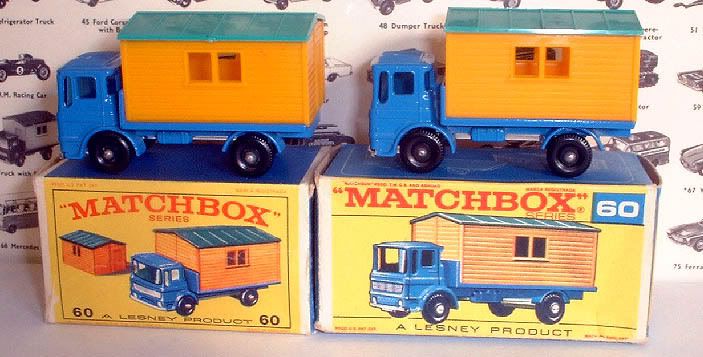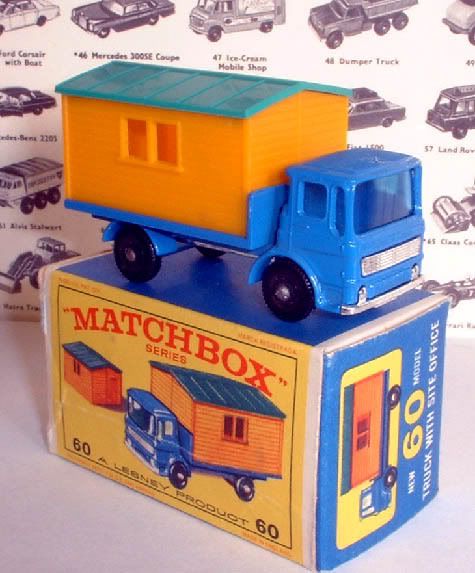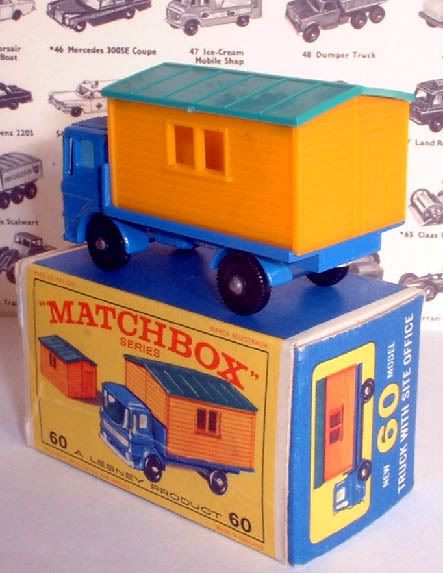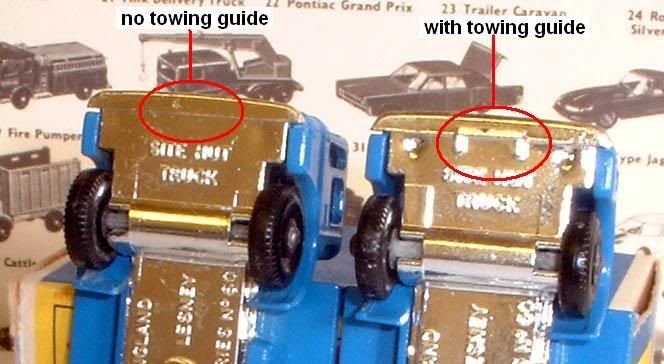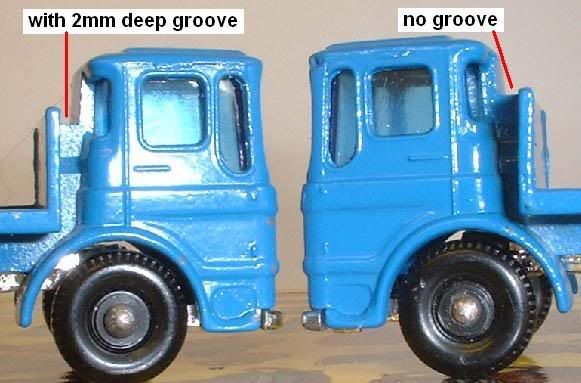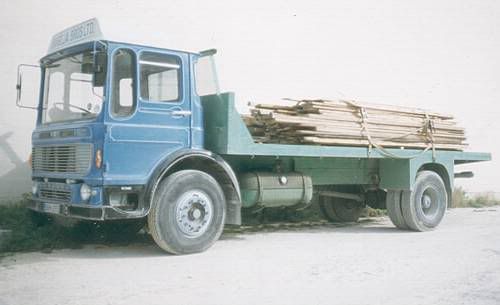The Lesney model of the Leyland site hut truck joined the Matchbox 1-75 series early in 1966, it was painted in one livery which was dark blue all over and it was fitted with a blue tinted plastic window unit.
The baseplate was chrome plated plastic which incorporated the headlights, front bumper and grille detail as part of the molding and it was attached by the headlights & grille locating through openings in the body front panel and by two round rivets, one at the rear of the baseplate and one in the middle and because of the ingenious design of the baseplate silver trim was not needed.
Trapped between the baseplate and the body casting is a plastic leaf spring for the suspension to all four wheels, The baseplate was later modified to include a towing guide behind the front bumper.Only one size of wheel was fitted to the Leyland - 11 x 45 on dome head axles with rounded ends, these were always black plastic as grey plastic were being phased out when the model was introduced.
Apart from the towing guides the only other alteration was to the body casting and that concerned the groove between the cab and the headboard of the load bed, the groove can be either approximately 2mm deep, less than half a milimitre deep or there can be no groove at all, these are probably variations in the dies used to cast the model rather than deliberate modifications made to the model.
The truck made a nice but somewhat plain model so to add to play value a yellow and green plastic 'site hut' was included as a load but it probably spoilt what was quite a nice model. The site hut was molded in two parts and the numbers 1 to 8 can be found molded into the green plastic roof and 1 to 4 on the floor of the yellow plastic hut, pre production models of the hut are known, they are different to the production model as they have a flat roof and are in cream plastic hut and brown plastic roof.
The Leyland must have been a popular model in its day because there are still plenty of them around, it was sold in 'E' and 'F' type boxes and was converted to superfast wheels in 1970.



